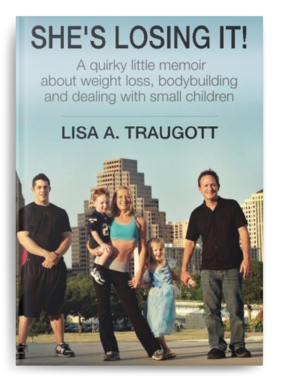How To Finish Writing Your Book
Writing the first word of your book can feel like embarking on an exciting journey. Not everyone finishes. Personally, it took me two attempts at novels abandoned half-way through before I was able to actually complete a full manuscript. This blog posts offers some tips to finish writing your book. Publishing your book, is a whole different ball of wax that I’ll write about at a later date.
Writing Style
There are two terms you will come across in writing books, blogs and videos:
- Pantsers – Write by the seat of their pants, not knowing how the story will end when they start.
- Outliners – Chart the story structure including start, end and major plot points and then fill in the gaps.
There’s no right or wrong, just your own preference. I’m a pantser and sometimes I wish that wasn’t the case because it led me down some wild rabbit holes that ended up getting cut from the final version. A lot of writers are a hybrid. They may start as a pantser and then sketch out an outline to help them finish. I had to do that with my current novel because I kept getting lost. I’ll talk more about outlining and character arcs below, but first let me tell you about the best thing I’ve discovered to actually FINISH writing your book…
NaNoWriMo – Inspiration for Pantsers
NaNoWriMo is short for National Novel Writing Month. It’s every November and free to do. The premise is simple: You have exactly one (1) month to write your 50,000 word novel. This embraces the idea that all writing is re-writing and by forcing yourself to complete a very bad version of your story you will then have a solid foundation to edit your story into the masterpiece you hope it will become.
One of the creators, Chris Baty, wrote a corresponding book called, “No Plot? No Problem!” It guides you week-by-week through this crazy writing experiment and answers a ton of frequently asked questions to get you over that finish line.
Help for New Writers
Each book genre has it’s own pros and cons. I’m rather an eclectic writer. I’ve written and illustrated a children’s book called “Mind Your Manners Minnie Monster” that won a silver Mom’s Choice Award, a memoir, “She’s Losing It!” (It’s like a Rocky for Moms – Strength training meets potty training), a self-help/non-fiction fitness book, “The S.L.I. Method” and I’m currently writing my first historical fiction (working title: “Trouble the Water”). The first three books I wrote without the benefit of any formal training in creative writing whatsoever. I wasn’t even an English major, so don’t let a lack of degree hold you back. If you have a story to tell or useful information to share, then go for it. That said, I did have friends proof-read the children’s book and professional editors line edit my memoir and non-fiction.
Fiction, however, is quite a different beast. You have to consider things like story arc, dialogue and themes. Since I’m writing an historical fiction an additional element called “world building” had to be addressed. For example, my novel is set in 1740. I had my protagonist say, “Hello.” Guess what? Hello wasn’t a word used until the invention of the telephone. Although I didn’t know that at first, savvy readers who consume historical fiction would and such a mistake would take them out of the 18th century “world”. My point being I had a lot to learn.
After writing my first draft manuscript I knew it wasn’t good enough to be sold in a bookstore (yet) and I desperately wanted to improve. I stumbled onto the Jerry Jenkins Writers Guild and it was worth every single penny. He wrote the Left Behind series that sold 60 million copies and wrote over 200 books, a lot of them on the NY Times Best Seller list. (By the way, I’m not getting paid to mention him or anything like that, I just really like his program. Also, he’s known as a Christian writer but his courses are secular and are for everyone.)
I think I paid $450 for a year for the guild with access to videos, master classes, and most helpfully his manuscript repair and rewrite where he edits the first page of students novels and non-fictions. His blog gives a checklist of Tips to Ferociously Self-Edit. After just reading that one post I realized just how much more I needed to learn. Last year I also signed up for his Novel Blueprint course (about $2,000), which included six months of accountability phone calls with a mentor and the first 10 pages of your novel edited by a professional writer. He really stresses doing a lot of outlining, researching and character analysis before writing the first word. Even though I already had a completed first draft manuscript the difference between the first draft and it’s current state is night and day.
The other writing course I recommend for historical fiction is The History Quill. They over six week courses in outlining, writing your first chapter and story structure for beginners. They also have a writing group where each month you share 1,000 – 5,000 words of your current work in progress and then get feedback from two students and a writing tutor. They have different pricing levels based on how much feedback you need. They also have a beta reading service (where readers read your manuscript and give a full critique) I found very helpful and also offer editing services, which I’m using right now. If you are thinking of writing in this niche genre, definitely check them out.
There are a ton of online courses out there. My friend has taken several “Master Class” online training courses and found them helpful. Some friends have joined writers groups they found on Meet Up, Facebook and local writers guilds specific to the city/state they live. Google around and you’ll find a course that’s right for you.
Useful Books:
- On Writing – Stephen King
- Save the Cat – Blake Snyder (this is for screenwriting but the principles apply to novels too)
- Save the Cat Writes a Novel – Jessica Brody (this is pure novel structure)
- K.M. Weiland’s Blog is an amazing resource. In addition to writing novels she teaches writing and her books on Creating Character Arcs have been very helpful.
How Long Does It Take to Finish Writing A Book?
I followed this NaNoWriMo plan for my first full length memoir, “She’s Losing It!” and I’m proud to say it’s published and giving me royalty checks. Yay! To give you a basic overview and timeline: She’s Losing It! is about how I lost 50 pounds by entering a bodybuilding competition at age 38 and fixed my messy life in the process. Training for the bodybuilding competition took five months and I blogged throughout the process (February – June) that became the main foundation of my story. (I still blog at ShesLosingIt.com today.) Friends and family suggested that my blog posts would make a good book, so I decided to do NaNoWriMo in November to get the actual manuscript done. December – the following August was spent working with an editor friend, filling out copyright paperwork, having another friend do the book cover photograph and going through the self-publishing route. (I didn’t attempt looking for an agent or publisher because I feared rejection and really wanted to tell my story.) I think the official launch was November.
- Completing 1st draft of manuscript: 9 months blogging + 1 month completing the book from start to The End.
- Self-publishing process: 1 year (includes several rounds of editing and all the publishing stuff that goes into making a book.
- Total time from thought to actual book: 2 years
Each person has their own timeline for birthing a book. I have one friend who worked on a book for four years. I met a woman who published three books in eight months.

Keep writing. The world loves a good story.
Lisa 😉
Copyright (c) Lisa Traugott 2022. All rights reserved.

